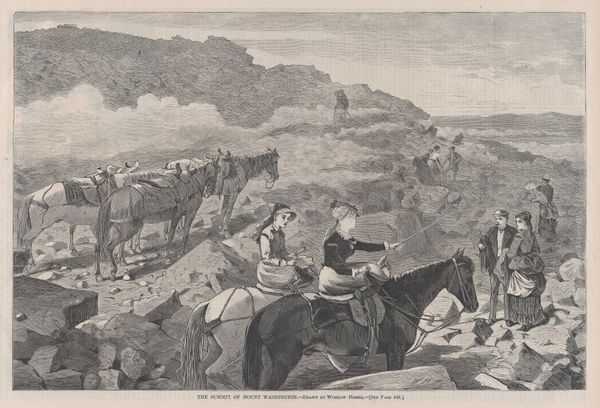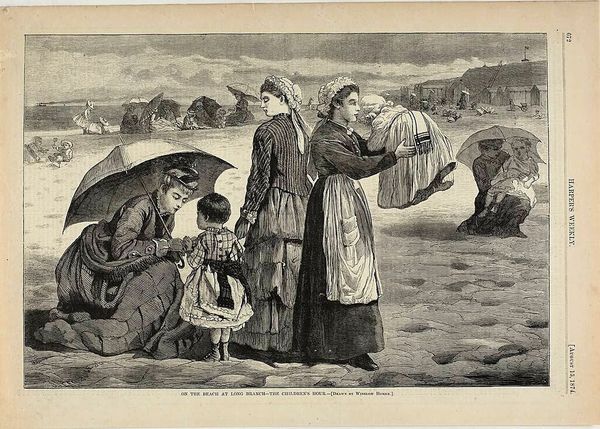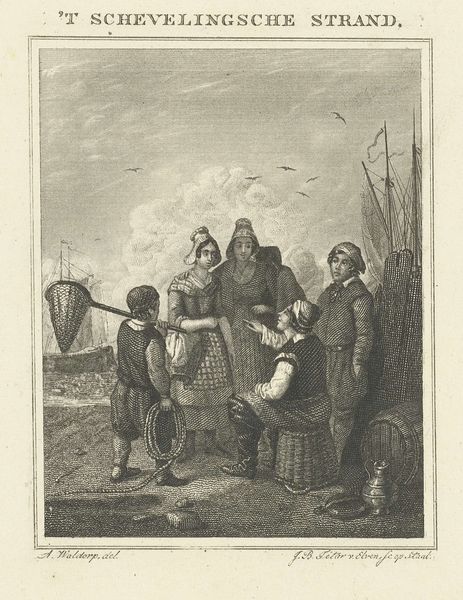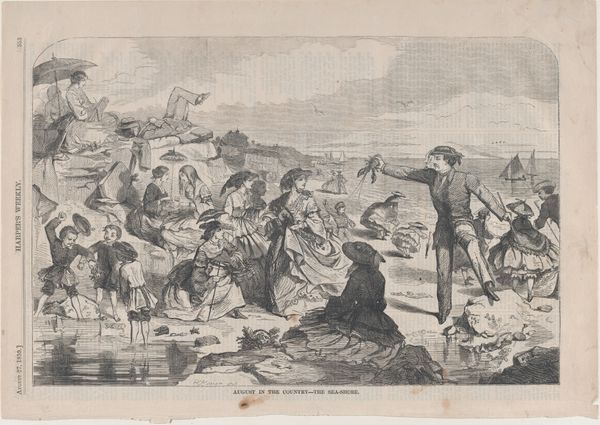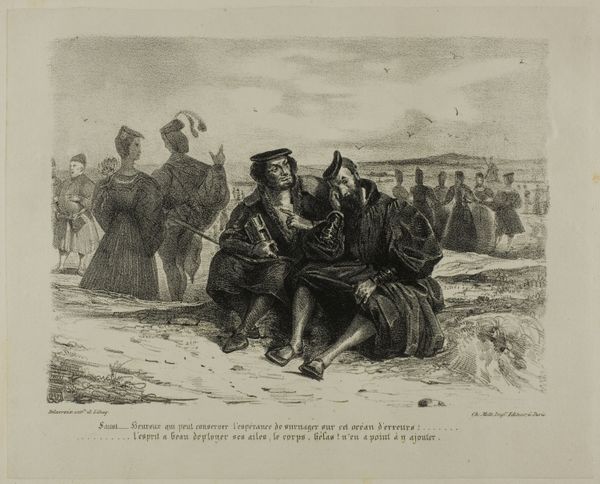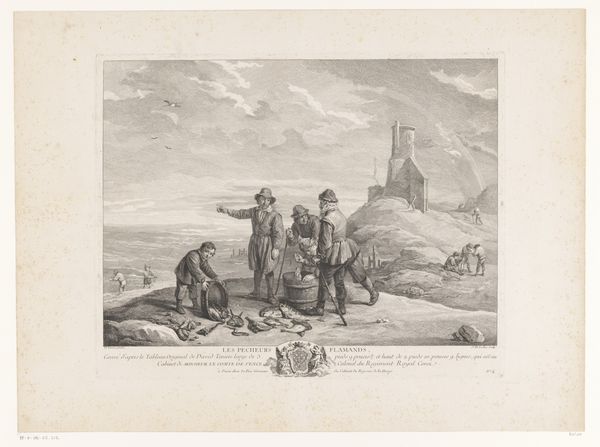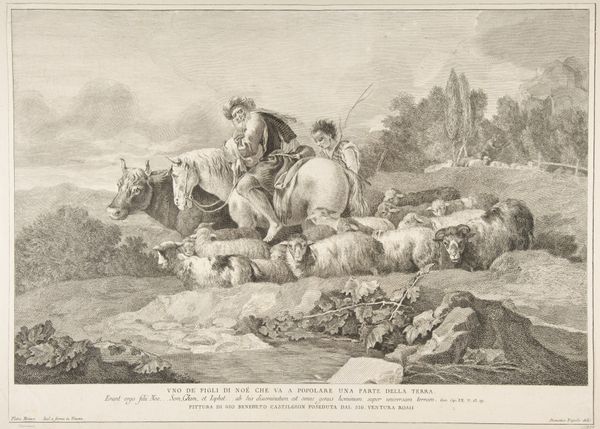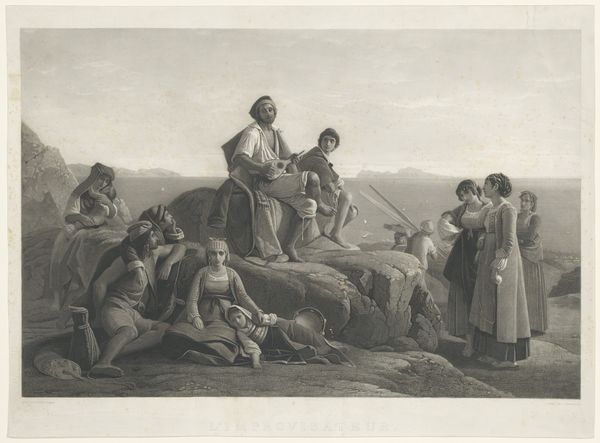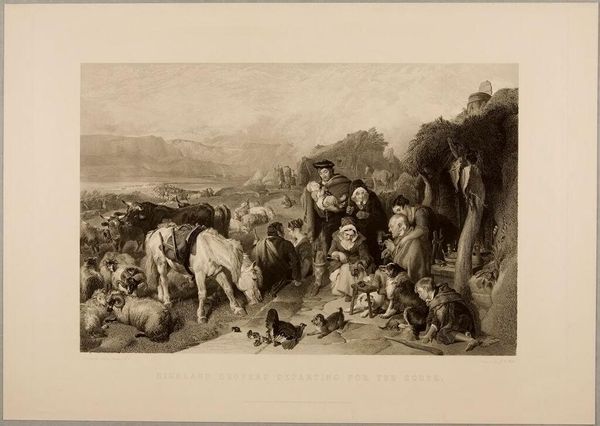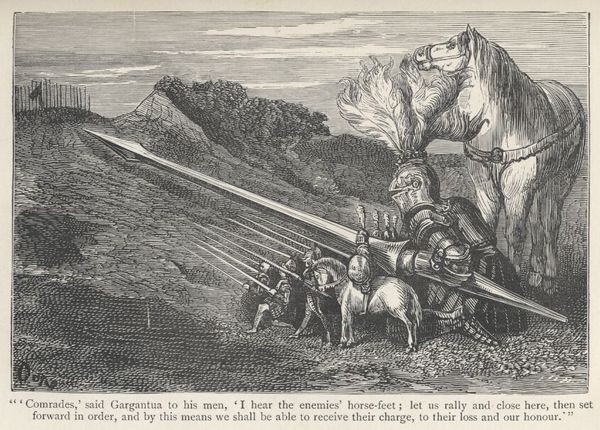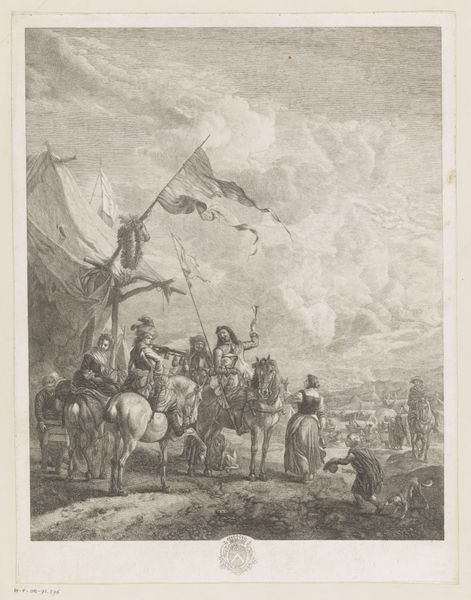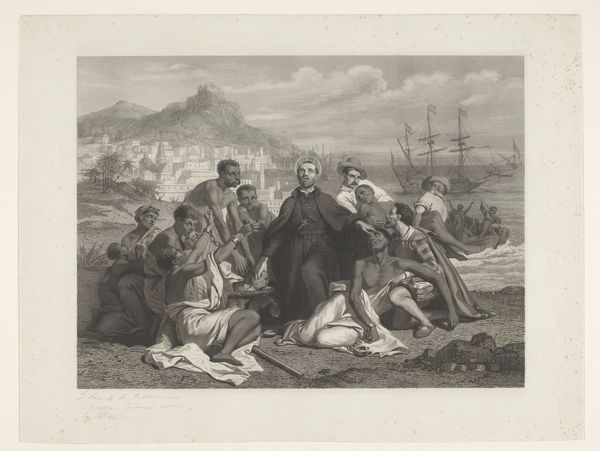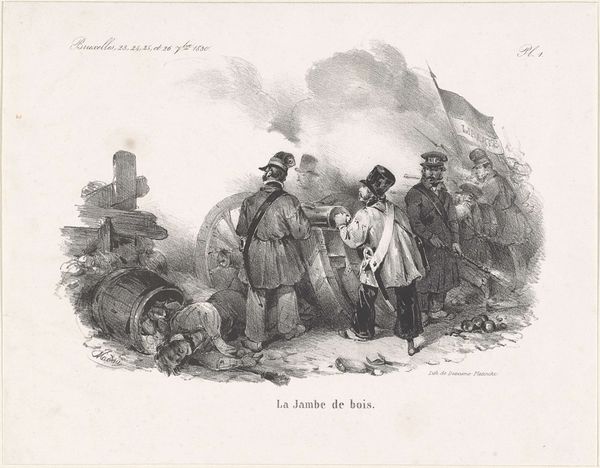
Copyright: Public domain
John Absolon made this drawing of Boulogne at an unknown date, and with an unknown medium. The image illustrates a specific cultural and economic dynamic of 19th-century Europe: the rise of tourism and its effect on local communities. Boulogne, a coastal town in France, became a popular destination for British tourists, particularly after the advent of railways. Notice the contrast: on the left, we see the local working class, likely fishermen and their families, while on the right are the wealthier tourists, identifiable by their fashionable clothing and leisure activities such as painting. This juxtaposition speaks to the complex social interactions and economic disparities that arose from tourism. The local population provided services and labor for the tourists, yet remained separate from them. To better understand the impact of tourism on towns like Boulogne, one could research period guidebooks, travelogues, and local economic records. Art such as this, after all, is contingent on the social and institutional contexts in which it was made.
Comments
No comments
Be the first to comment and join the conversation on the ultimate creative platform.
